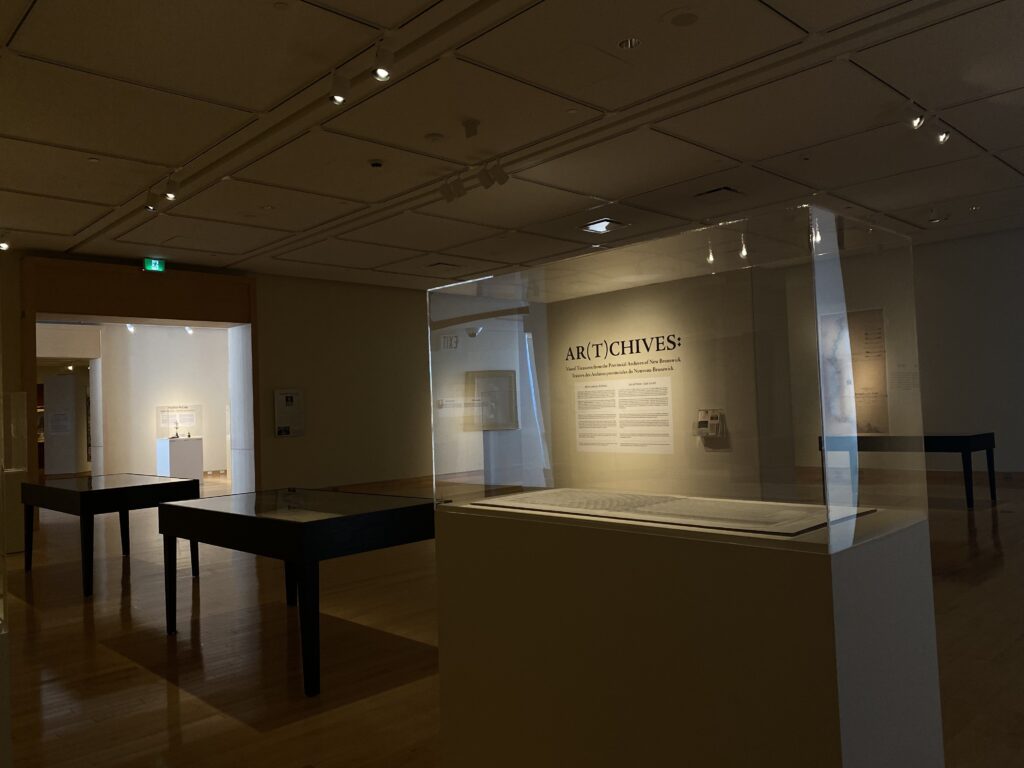The Provincial Archives of New Brunswick (PANB) is currently promoting an exhibition at the Beaverbrook Art Gallery. The exhibition, which is titled “AR(T)CHIVES: Visual Treasures from the Provincial Archives of New Brunswick,” opened in early December of last year and will run until May 28, 2023.
Curated by Joshua Green, Julia Thompson, and John Leroux, the exhibition highlights the variety of visual artifacts held at the Provincial Archives.
Visual pieces are not what comes to mind when one thinks about an archive. There is a common assumption that these institutions house exclusively (or mostly) written documents but, the description of the exhibition clarifies, “while Canadian archives seldom collect fine art deliberately, their holdings often contain what is known as ‘documentary art.’”
Documentary art consists of, according to Library and Archives Canada, “drawings, paintings, prints… posters, etc. that document Canadian history, government and social development… these artworks depict objects, scenes, events, historical events and people, or reflect public opinion and attitudes.”
As primary documents, they provide valuable peaks into daily life in the province before the spread of photography as a medium.
Many of the artworks available in the exhibition pre-date the Confederation of Canada. In many instances, these paintings, sketches, maps, and other forms of artwork were produced by either colonial administrators or military men. These men, as well as their families, often “received some sort of artistic training before embarking for Canada.”
These drawings, as explained in the exhibition’s booklet, were utilized for “strategic and military purposes in the days before photography.” Many creators of these registries served as engineers in the military since Woolwich’s Royal Military Academy began to employ “drawing masters” around 1743. The drawings of engineers and military men prized accuracy, which makes them even more significant as forms of documentation.
This exhibition provides valuable insight into the development of the province in a very aesthetically pleasing manner.
For those who are of a more visual inclination, seeing historic New Brunswick through these documents may help to ground their own historical imagination in a more feasible manner. That is, in a way that does not come across as naturally when one reads straight from a written document. It can be hard to imagine the past when one has no grasp of it.
Artistically-minded individuals may also be drawn to the exhibition for the variety of styles found in these artifacts. There are maps, designs, sketches, cartoons, self-portraits, and other genres of art. Some are more structural, as in engineering sketches — as in that of the Sackville Bridge, by Alexander Luders Light. On the other hand, others are more conceptual and abstract, such as Bruno Bobak’s Mining.
The AR(T)CHIVES exhibition is a must-see for those inclined towards history, art, or an intersection of the two while providing a taste of what PANB houses in their collections.
The exhibition runs until May 28th at the Beaverbrook Art Gallery. UNB students have free admission to the gallery.




